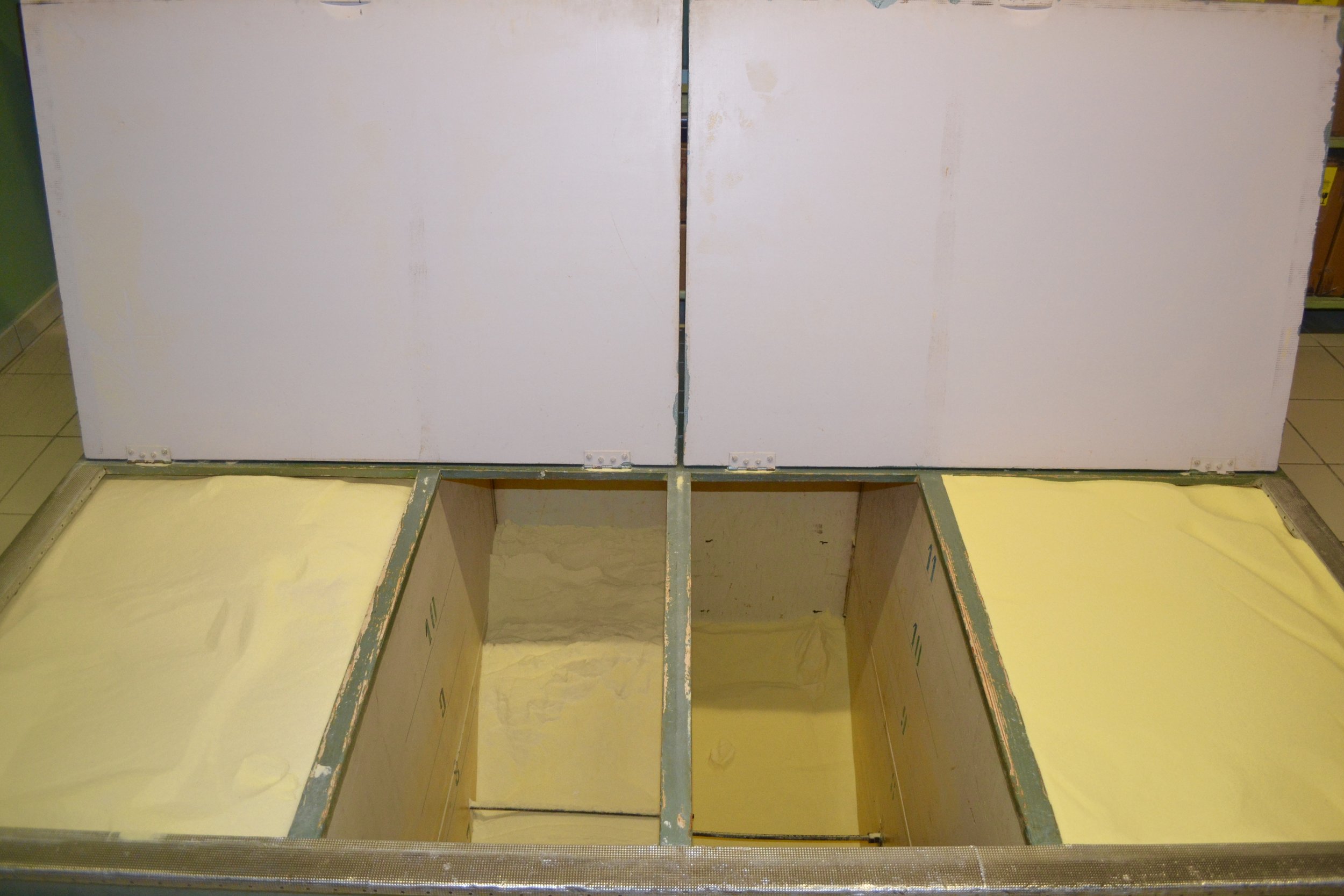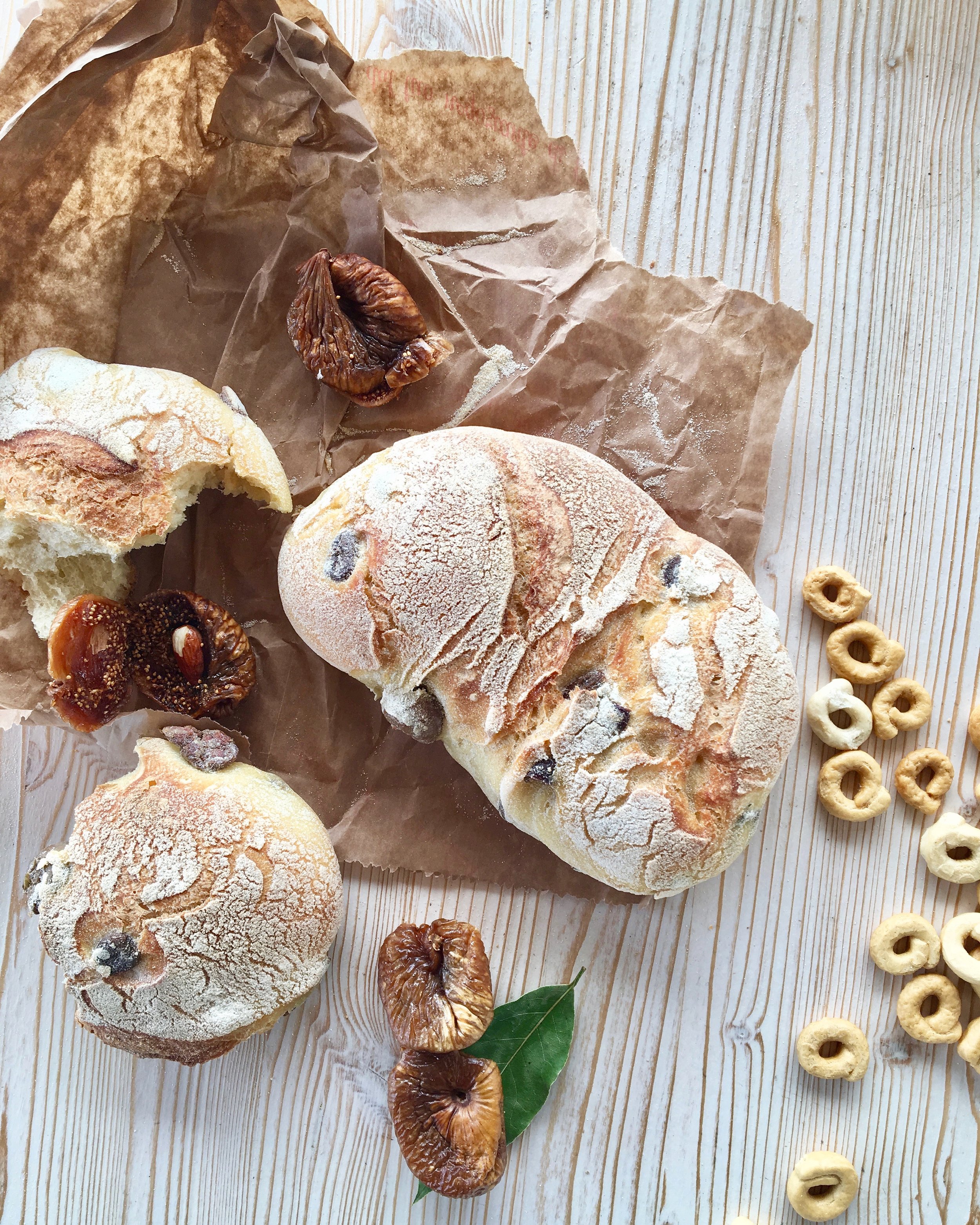A Greater Appreciation for Constant Cravings
Nothing is more exciting than going to a pasta factory and taking away a goodie bag full of free artisanal pasta. Benedetto Cavalier pasta factory has been in business for one hundred years cranking pasta in a very special way. The machines, I think, are practically old fashion, running their current life of forty years.
Lovely Andrea, showed us around the factory pointing out every small detail. He showed us the types of semolina used to process each type of pasta as well as which ones get shipped to other countries, and how the packaging process works. The Japanese receive all the long pasta, the U.S. gets bucatini and orecchiette, Australia eats orzo, and Russia receives anellini or tubetini. Puglia has a more diversified selection like Casarecce and orecchiette. However, as the frivolous story goes, Casarecce and orecchiette are often packaged and prepared together in Puglia resembling the symbol of matrimony (the male and the female genitalia). Sometimes these things really make me chuckle.
We all put on cotton robes and hair nets in order to go upstairs to the room where they processed and dried the pasta. The dough is simply made with water and flour and shaped in rooms with high humidity in order for the pasta to dry perfectly without cracking.
This vat opened to a pit full of different semolinas they use to process their 32 types of pasta. The white semolina is more elastic and the yellow semolina contains more protein. More glutinous flours for longer kinds of pasta like bucatini, spaghettoni, and tagliatelle and less glutinous flour for the shorter pasta like Anellini, Tubatini, Lumache, and Ruote Medie.
We were able to chew on spaghetti fresh off the machine producing long continuous strands. It almost tasted like it was cooked, but very al dente. I think that it's possible for a quality ingredient to make your product taste good no matter what form it's in.
As we walked through the entire factory we watched the final stages of the pasta, as it slid up the conveyor belt and dropped into bags in perfect proportions. I have noticed gendered spaces in multiple places around Italy and I think this place was definitely one that amplified that thought. While men were upstairs sweating as they pushed around carts full of spaghetti on drying racks, six women stood around a room stamping dates, hot gluing decorations, and sticking the final labels onto the bags of pasta. This gave me a greater appreciation for many artisanal products I buy and consume. And yes, the end of our tour resulted in me gratefully walking away with four bags of pasta!
"But then, miraculously, there is olive oil."-Mark Kurlansky
The first things that caught my attention when arriving in Puglia were all of the olive trees that surrounded the highways. I could not believe that I was seeing these gorgeous, fruit bearing trees in person. They have this look to them; they are short, stout and gangly with curvy branches jutting out from every which end.
There are a few different methods of grinding olives; stone mills, hammer mills and metal tooth grinders (not as common). The stone mills are classic, but also hard to clean and time consuming. October to December is the best time for harvesting and producing olive oil. Olive oil can be classified in a few phases as virgin extra virgin, blend, or lamponte. You may know, extra virgin means the olives have been through a second press making the oil a bit more bitter and spicy. Lamponte is the oil at its lowest quality and may be considered for beauty products instead of consumption. We had a very passionate olive oil connoisseur visit our class to do an olive oil tasting. Could anyone imagine how interesting this would be to do for a living? Johnny was very insightful about the method of testing and tasting olive oil that he even had special vessels to use for the process. Unfortunately, I wasn’t able to snap a picture of it. It was a small blue vessel (blue so you don't notice the color of the oil when tasting) with a tall inner lip that traps the smell of the oil when exposed to oxygen.
The first thing we smelled was a bag of olive residue called sansa. It looks like crushed black sun dried olives. Later when we ventured off to the olive oil factory in Ugento, we saw a heaping pile of the stuff; it filled the air with this harsh, bitter smell.
Olive oil tastings follow strict guidelines:
1.Never taste olive oil on a metal spoon; plastic or glass is best.
2. Olive oil vessel will either be labeled with roman numerals or letters. One will never know what they are testing.
3. With the cover on the vessel one must warm the oil with the heat of their hand. It should never be cold.
4.Take a quick waft of the oil and close the lid. What do you smell? You should take note of the fruity, bitter, and spicy notes you waft and the levels each oil portrays.
5. Think of the dish you would want to pair the oil with. This is a bit tricky but it helps get the creative juices flowing. Don't be fooled to think that all oils smell similar because they most likely do not; although it's easy to think that way.
6. Now one must taste the oil. The best way to conduct this step properly is by sitting down, poised, chin down. You do not want to slurp the oil with your head back as the oil should not enter your throat until you are ready to swallow. As you taste the oil, make sure to create slurping sounds to allow air flow in your mouth (similar to a wine tasting).
7. Take notes again recording the fruitness, bitterness, and spiciness of the oil on the palette.
The Morning Mercato
This morning after oversleeping slightly (I usually like to stick to a schedule) I got up and walked to the market in the town of Ugento. Every Saturday they host a market a few streets behind the castle where locals go to gather fish, cheese, salumi, produce, and olives for their midday meals. A young gentleman wanted me to try a few different types of taralli, such as saffron and cipollini. I decided on the traditional taralli, which have always been my favorite. Some others who went into town bought dried figs stuffed with almonds and olive bread made in the local region of Salento.
“No Mortadella”
I stood by a bread stand where there was a police officer telling me to have a sandwich with mortadella. I said- "no, proscuitto"- because in the past I have not always been fond of mortadella and that just may be because I have seen the rubbery, processed, bright pink American kind, which is nothing short of a turn off. He said "no, mortadella" and about ten minutes later, the officer approaches my friend and I, giving us half of a mortadella sandwich each. And then he made a gesture about how delicious the sandwich is.










